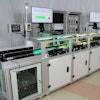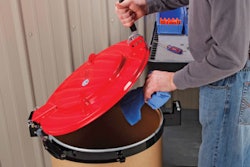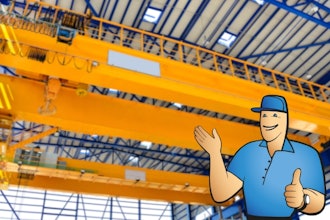This article first appeared in IMPO's May 2012 issue.
With cash flow getting tighter, machinery health is now more important than ever. Unfortunately, not every manufacturer with a shoestring budget is placing an emphasis on their preventive maintenance program. As tough staffing decisions pull critical hands out of the plant, many end users find themselves on the business end of deferred maintenance, resulting in reactionary struggles against downtime. Some, we hear, have eliminated their preventive maintenance programs altogether. So what kinds of arguments can cause manufacturers to take a renewed look at this critical care for machinery?
Worth The Risk?
According to Downtime Central, a web property of Business Industrial Network, most of the time, the true cost of downtime is ten times what you currently use in cost justification reports.
Trying to determine the root cause for concern in a complex piece of machinery is a tough task on its own, but far less daunting when it’s still online, playing the role within a plant that it was designed to. If you wait until after the failure point, there’s no telling how long your line will be down. And whether it costs you ten times what you estimated, or even two times, downtime costs are always money better spent elsewhere.
“Once a piece of industrial equipment has been purchased, preventive maintenance and repairs are opportunities to minimize the additional cost of ownership,” says Ben Cabot, product marketing, Test & Measurement for Milwaukee Tool.
With this in mind, we had a panel of inspection tool experts explain just what you need in your arsenal and why.
Video Inspection/Borescopes:
With time and technological advancement has come a great opportunity for maintenance professionals to get their eyes on hard to reach areas of the plant. When it comes to tight, hard-to-view areas borescopes offer a test and measurement opportunity in a small profile. This optical device typically features a flexible tube with a lens at the end that’s designed to reach crevices within or between machinery. Video borescopes, or inspection cameras, offer cameras at the end of the tube, typically providing the ability to store images or video, allowing users to view the material at another time or location.
“Inspection cameras are a great tool for assessing the condition of equipment because often what can wear and tear can’t be easily inspected without dismantling a piece of machinery,” explains Cabot.
Roger Mavrides, VP of engineering and product development for General Tools & Instruments echoes Cabot’s point, further emphasizing the critical role these tools can play in many areas besides just downtime reduction. “Incorporating these systems into preventive maintenance routines reduces equipment downtime and labor, while increasing safety and enabling the identification of potential problems before they become critical,” he says.
Part of the value proposition that comes with these inspection tools includes their multitude of uses within an industrial environment. According to Mavrides, applications can include:
- performing maintenance inspections of pumps, valves, compressors, process equipment, heating and cooling equipment, gear boxes, fabricating machines and other industrial equipment.
- inspecting welds in tubing, piping, tanks, and other equipment.
- detecting leaks, cracks, corrosion, blockages, and deposit build-up in ducts and piping.
- reading inaccessible or hidden part or serial numbers.
- examining interior surfaces of complex machined or cast parts for burrs, cavities, or other imperfections.
Vibration Tools:
Industrial vibration analysis is a measurement tool used to identify, predict, and prevent failures in rotating machinery. One of the most difficult charts to accurately read and analyze, a vibration spectrum and waveform can hold a lot of details about vibration issues within commonly used, highly critical process equipment like motors and pumps.
According to Demi Namli, marketing manager for Fluke Corporation, a machine’s vibration can begin to change up to nine months before failure. For Fluke, vibration itself is not necessarily the problem, rather excess vibration, which can indicate internal issues such as bearing failures, imbalance, misalignment, and looseness that shorten equipment life span.
In an effort to create a frontline tool for mechanical troubleshooting, Fluke designed its new tool (available in June) to allow operators to engage in quick vibration screenings to determine whether follow up assessment is necessary. If the tool indicates a problem, the technician will typically call in a more advanced analyst to locate the specific fault.
This more in-depth analysis, says Steve Matthews, business manager for Predictive Maintenance Solutions, requires the right tools and a skilled vibration analyst. PdMS, an affiliate of VibrAlign, is a leader in machinery vibration diagnostics, balancing, machinery alignment, and training services, and stresses that “the best tool is always good training.”
It’s this training that allows an analyst to know the difference between a moderate and a severe problem, and also to track the data over time to make better informed maintenance decisions. “Analysis might reveal a developing bearing fault, however, if the problem is only moderate, lubrication might be the right action to take so that particular machine can continue to serve its function until the next available downtime for bearing replacement,” explains Matthews. “Continuing trending of machine conditions gives managers not only the corrective action to remediate issues, but also the right time to take those actions.”
Alignment Tools:
“More manufacturers are realizing that long machinery life is not likely to be achieved without precision alignment,” says Matthews.
Something of a sister program to vibration troubleshooting, proper precision shaft alignment is a preventive measure that should be part of any maintenance strategy that is optimized for long term reliable operation. The key, says Matthews, is applying the right tools at the right time. “For example, precision alignment should always be measured with a shaft alignment tool, even though vibration analysis may detect the presence of misalignment – misalignment does not always generate significant vibration.” For this reason, Matthews suggests companies partner with vendors that have the specialized knowledge in their fields and can provide training on tools and their applications.
Infrared:
According to Ted Lund, temperature products manager for Fluke, temperature is the most measured variable besides time. Unfortunately, temperature guns are also one of the most misused tools in the industry.
Fluke’s latest release (available in May), is the 62 Max and 62 Max+ Infrared Thermometers, designed to withstand drops, dust, and water. The Fluke 62 Max is ideal for quick temperature scans of systems, to look for unusual hot spots that signal electrical and electro-mechanical malfunctions. “Many people mistake the laser pointer for a precise indication of measurement area, when in fact, the measurement area expands with distance from the target, creating an average temperature reading across multiple components. For that reason, the new Fluke 62Max+ offers two lasers that visually outline the measurement area,” says Lund.
Infrared thermometers can find signs of premature failure as well as power or electrical issues, flow restrictions, mechanical issues (such as inadequate air flow, bearing failure, improper lubrication), or process issues (ineffective insulation, obstructed flow, failed valves, leaks, or sludge buildup).
Also. says Lund, thermal imagers are a more effective predictive maintenance tool than infrared thermometers and thus more commonly used in pdm programs. “Thermometers are a great, cheap option for quickly scanning an object for abnormalities, while thermal imagers display the temperature pattern of the entire object and overlay it with a digital image, showing the user exactly where an abnormality is and making it possible to diagnose a pipe blockage or overheating component.”
A Targeted Approach
Ultimately, explains Matthews, “The right tools for a predictive maintenance program should be tailored to the right applications, keeping in mind how much time, effort, and expense should be given to assets based on criticality to the process (downtime/profitability), or to safety.”
With good advice from vendors and a management team in place who sees the value in each application, perhaps the state of predictive maintenance isn’t as bad as it seems. According to Matthews, the employment gaps in industrial facilities may actually result in improvements of these critical programs: “Turnover has created some skill gaps, and also many companies have reduced work forces at the same time, requiring fewer personnel,” he says. “I believe there is a growing emphasis on predictive maintenance as a result of the need to maintain assets more efficiently, with less time, and less expense.”
Echoes Cabot, “Reducing the amount of time it takes to perform quality inspections means saving money. The user is more productive, and can keep a better eye on a machine’s health, helping reduce costs associated with ongoing maintenance.”























